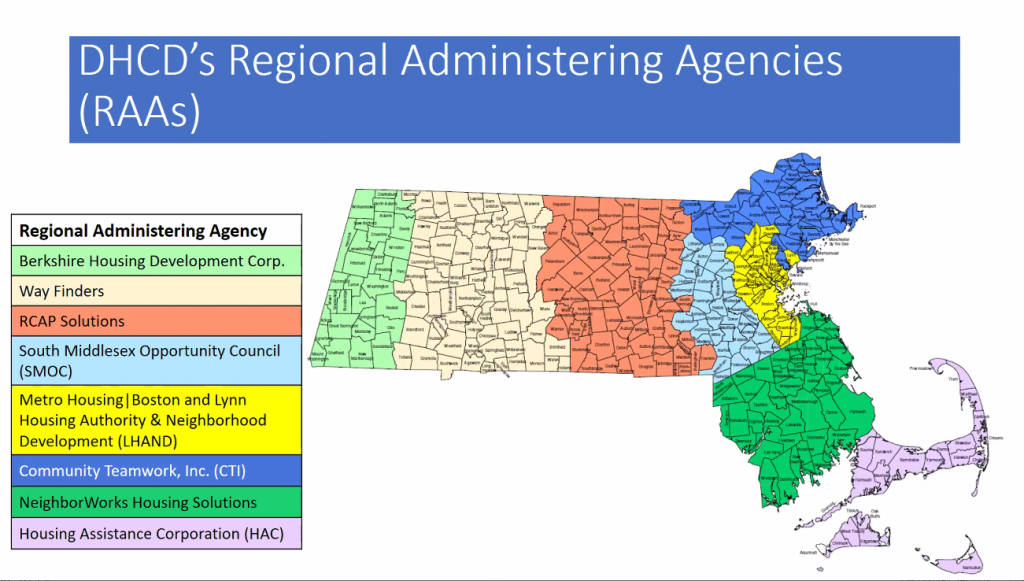Landlord's Guide to RAFT
 While I've written several blog posts in the past explaining why Massachusetts is one of the worst states to buy rentals in, it is the state where I first started investing and still hold multiple properties in today (a wise investor never sells cashflowing assets). As a result, I'm very familiar with its rental policies as well as rental assistance programs available in this state. One such program is RAFT (Residential Assistance for Families in Transition). Unlike Section 8, which is meant to provide permanent housing aid, RAFT is only meant to provide temporary (1-4 months) assistance to the tenants.
While I've written several blog posts in the past explaining why Massachusetts is one of the worst states to buy rentals in, it is the state where I first started investing and still hold multiple properties in today (a wise investor never sells cashflowing assets). As a result, I'm very familiar with its rental policies as well as rental assistance programs available in this state. One such program is RAFT (Residential Assistance for Families in Transition). Unlike Section 8, which is meant to provide permanent housing aid, RAFT is only meant to provide temporary (1-4 months) assistance to the tenants.
Established in 2005 with the goal of helping those experiencing a temporary housing crisis and preventing homelessness, RAFT has evolved in response to economic fluctuations. The advent of the COVID-19 pandemic marked a significant inflection point for RAFT. In response to the widespread economic disruption caused by the pandemic, the Massachusetts government expanded the funding and scope of RAFT significantly, bumping the maximum amount of aid offered to $10,000 per 12-month period (a figure that in late 2022 seems to have been lowered to $7,000). Despite being aimed at tenants, this program was a godsend to the landlords, who otherwise got screwed by the eviction moratorium. The changes included increased funding limits, broader eligibility criteria, and streamlined application processes, allowing the program to reach a wider array of households in distress.
To qualify for RAFT assistance, tenants must demonstrate a verifiable housing crisis caused by loss of income, increased expenses, or both, which threatens their ability to remain housed. Applicants are required to meet certain income thresholds, typically at or below 50% of the area median income, although specifics can vary by region and funding availability. The RAFT program offers up to $7,000 per household in a 12-month period (which I already mentioned earlier). This assistance can be used to cover rent, utility bills, moving costs, and other expenses necessary to avoid eviction, secure housing, or maintain housing stability.
The organization administering the RAFT program in your area will often be the same organization administering Section 8 assistance. The following graphic from MassLandlords shows which agency handles RAFT by zip code:

Since the same MassLandlords website already does a decent job outlining the basic application process, I'll skip the generic details here and focus on my own experience with RAFT instead.
How to Qualify?
While often administered by the same agency, RAFT program is independent of Section 8. Both regular tenants as well as those already receiving Section 8 assistance can qualify for RAFT. The only requirement is proof of hardship. It's up to the individual agent assigned to the application to decide whether the presented proof of hardship is sufficient.
From personal experience, the agents seem to be pretty lenient on the definition of hardship. I've had tenants present paperwork showing recent (within the last year) car accident they were in, medical bills, job loss, or even documentation from a police report showing that they were a victim of domestic violence. All of these tenants got approved.
A pending eviction also qualifies as evidence of hardship, but if you (as the landlord) actually go through with the eviction, you likely won't see a dime of the RAFT assistance. Although if you are trying to encourage a problem tenant to leave on their own, helping them apply for the RAFT assistance so they have the funds to move may still be of benefit to you rather than having to offer cash-for-keys yourself (because MA eviction system is broken, and it's going to cost you an arm and a leg to legally get the tenant out through court).
Luckily the administration doesn't actually require you to file a formal eviction for the tenant's hardship to be considered, even if the verbiage on their website seems to claim that (and this is probably the last thing you want to do if you actually want to keep the tenant). Instead, I found that simply issuing a Notice to Quit For Non-Payment is enough (you can download a sample notice at the bottom of this blog post).
A Notice to Quit is the first notice you would issue to the tenant prior to taking legal action, and while the wording in the notice gives the tenant a deadline to remedy the situation by (typically 14-30 days), there is no hard requirement that you have to start the eviction process when the deadline runs out or follow through on the notice at all.
In fact, given the snail pace of the processor approving RAFT (typically 8+ weeks), your Notice to Quit will probably expire long before they actually review the application. This is a broken system where the processing department fails to appreciate the urgency of the tenant situation. You as the landlord basically have to do this "dance" where you pretend to be set on evicting the tenant, but not actually follow through with it.
How Does the Process Work?
There are several steps to the process, and while it sounds confusing, it is actually straight forward for the landlord.
- Have your tenant fill out an application at the appropriate agency for your area (based on the links I've shared earlier in this blog post). Your tenant will be required to submit proof of hardship, explanation of their situation, landlord's contact information (e-mail, phone) and possibly other documents.
- As soon as tenant submits the application, it will have a case worker assigned to it (this step happens quickly, typically within 1-2 days).
- Once a case worker is assigned, you as the landlord will receive an email from the RAFT administration asking you to submit supplemental information. This will typically consist of the following:
- Copy of the Lease
- Notice to Quit (free sample at the bottom of this blog post)
- Rent Roll showing outstanding payments due (free sample at the bottom)
- Proof of Ownership (Quitclaim Deed work well here and you can download it directly from your city/county's website). If your property is in an LLC, you'll have to jump through additional hoops (provide Articles of Organization, and make sure you have a separate bank account setup for your LLC as the agency will refuse to issue payment to a personal bank account - even if your tenants have been doing so).
- Bank Information (for Direct Deposit)
- Once you submit the initial paperwork, I would follow up with the agent every couple weeks (and ask that the tenant do the same). As mentioned before, the case workers don't treat these cases with the same level of urgency they claim to and it's not uncommon for your application to only be looked at 2 months later. If you leave the processing to chance, you may only hear back 3 months later, only to find out that you need to submit more information, delaying the process further.
- Once your application is reviewed, you will typically be told that your paperwork needs to be resubmitted because it's out of date (in particular the rent roll information, and notice to quit, if you've taken any action on it).
- Once you resubmit this documentation, you and the tenant should get the final response within the next couple weeks and (if approved) the money will be deposited to your bank account.
FAQ
Q: What happens if you do go ahead with the eviction?
A: The RAFT program is mainly meant to benefit the tenant. If the landlord has already gone through the eviction process, he/she likely won't receive RAFT payments to cover unpaid rent. Instead, the tenant may use the payment to use towards new housing and moving fees. In fact, RAFT guidance does state that existing landlord with unpaid rent due does NOT get priority over new landlord if the tenant does decide to move.
Q: A new tenant is using RAFT to pay for security deposit and 1st month rent, yet I didn't have to go through any of the steps outlined in this blog post.
A: See the answer to the previous question. This tenant has applied for RAFT while under their old housing accommodations and is using the payment towards new housing and moving fees. if the tenant already got approved, it's up to them how they direct the payment. The only requirement is that they can't physically touch the money, you will still be paid through the RAFT program directly.
Q: My tenant has already applied for RAFT program in the past. Can they apply again?
A: Yes, the program's only stated requirement regarding payment limits is that it's not to exceed $7000/year. Nothing prevents the tenant from applying for this program every year, as long as the funds are still there. Similarly, if the tenant has not received a disbursement up to their maximum limit during the initial application, they can apply multiple times in a calendar year. I've even heard cases where the tenant was able to exceed the limit in a calendar year (but that may have been because the agency missed the fact that they already had another approved application earlier the same year).
Conclusion
I've included a sample Notice to Quit for Non-Payment and Rent Ledger template below. This is a free resource for landlords to use, in order to download these files you simply need to sign up for our free account. If you found this blog post helpful, please also consider signing up for our newsletter. We'll walk you through the steps to buying your first property, help you find ideal locations, and even provide you with remote property management solutions.